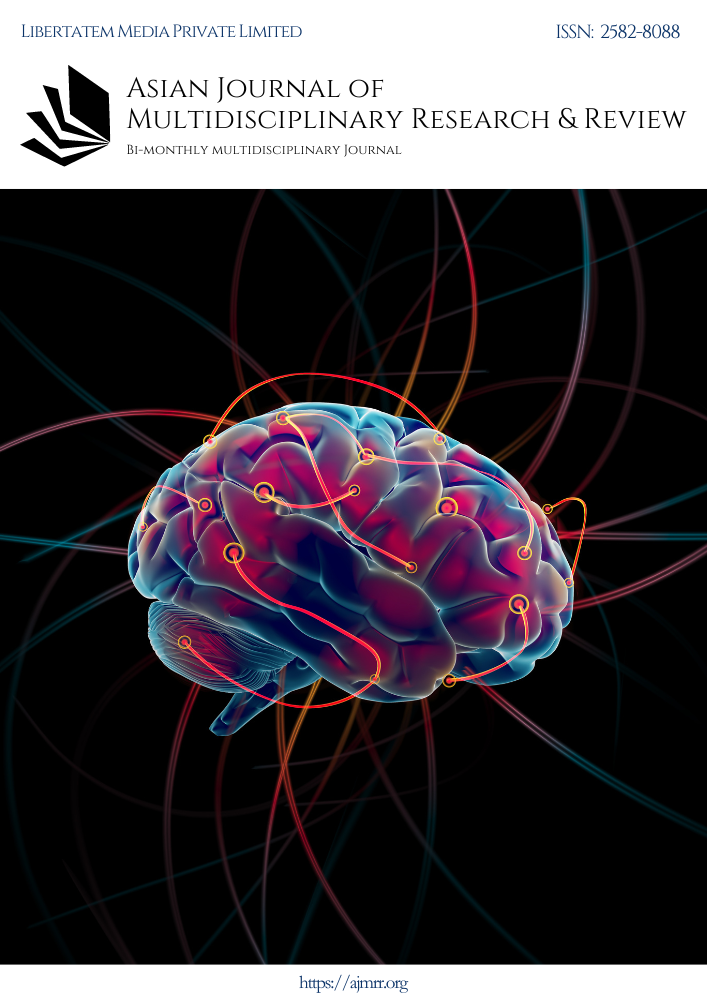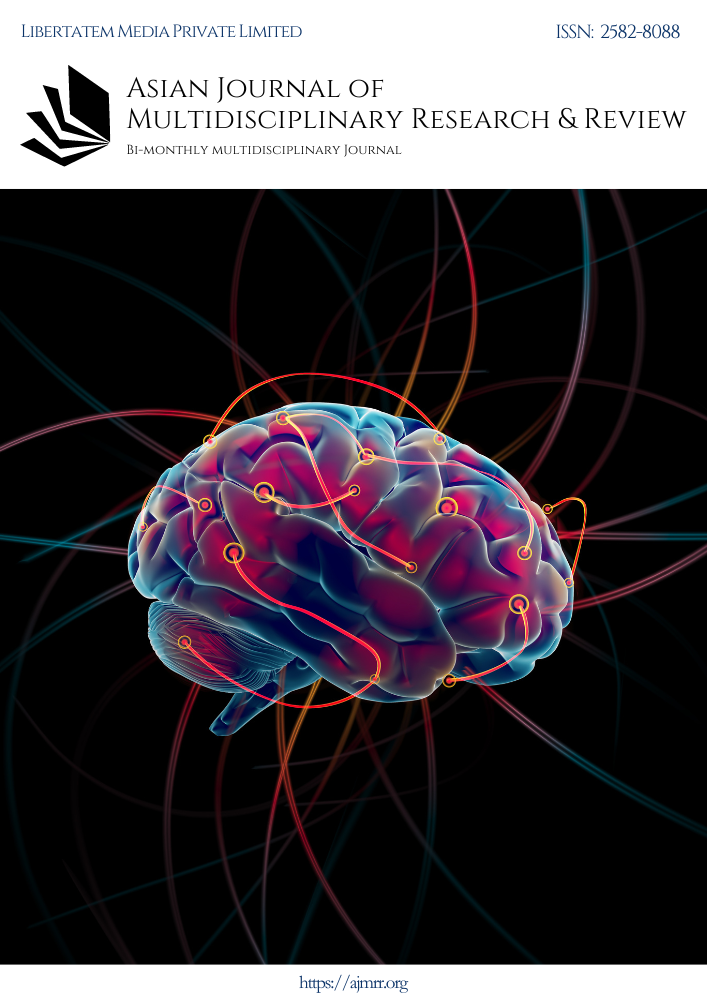The Role of Artificial Intelligence in Enhancing Network Security: Opportunities and Challenges
Keywords:
Artificial Intelligence, Network Security, Cybersecurity, Automated Threat Detection, Anomaly Detection, Adversarial AttacksAbstract
The increasing sophistication of cyberattacks and the growing complexity of network systems have created an urgent need for more advanced cybersecurity solutions. Artificial Intelligence (AI) has emerged as a transformative force in the field of network security, offering significant opportunities to enhance protection against evolving threats. This paper explores the various ways AI is being applied to strengthen network security, focusing on its potential to automate threat detection, identify anomalies, and provide real-time responses to cyber incidents. By leveraging machine learning algorithms, AI can detect previously unknown threats and reduce reliance on traditional, rule-based security measures.
However, the adoption of AI in network security is not without challenges. This study also delves into key obstacles such as data privacy concerns, the threat of adversarial attacks, and the complexity and cost of implementing AI solutions in real-world environments. The ethical implications of deploying AI-powered systems in cybersecurity are examined, particularly with respect to handling sensitive data and the risks of biased decision-making. Moreover, the paper highlights the vulnerability of AI models to manipulation, where adversarial actors can deceive AI systems, leading to potential misclassification of threats.
Through a comprehensive analysis of both opportunities and challenges, this paper aims to provide a balanced view of AI’s role in network security. It concludes by offering insights into the future of AI in cybersecurity, emphasizing the need for more robust and adaptive systems to ensure the safety and privacy of network infrastructures. The findings suggest that while AI holds tremendous promise in enhancing network security, significant efforts must be made to address its limitations and risks to maximize its efficacy and trustworthiness.
Downloads
References
Naseer, I. (2021). The efficacy of Deep Learning and Artificial Intelligence Framework in Enhancing Cybersecurity, Challenges and Future Prospects. Innovative Computer Sciences Journal, 7(1).
Mughal, A. A. (2018). Artificial Intelligence in Information Security: Exploring the Advantages, Challenges, and Future Directions. Journal of Artificial Intelligence and Machine Learning in Management, 2(1), 22-34.
Naseer, I. (2021). The efficacy of Deep Learning and Artificial Intelligence Framework in Enhancing Cybersecurity, Challenges and Future Prospects. Innovative Computer Sciences Journal, 7(1).
Kuleto, V., Ilić, M., Dumangiu, M., Ranković, M., Martins, O. M., Păun, D., & Mihoreanu, L. (2021). Exploring opportunities and challenges of artificial intelligence and machine learning in higher education institutions. Sustainability, 13(18), 10424.
Waqas, M., Tu, S., Halim, Z., Rehman, S. U., Abbas, G., & Abbas, Z. H. (2022). The role of artificial intelligence and machine learning in wireless networks security: Principle, practice and challenges. Artificial Intelligence Review, 55(7), 5215-5261.
Rizvi, S., Scanlon, M., Mcgibney, J., & Sheppard, J. (2022). Application of artificial intelligence to network forensics: Survey, challenges and future directions. Ieee Access, 10, 110362-110384.
Nishant, R., Kennedy, M., & Corbett, J. (2020). Artificial intelligence for sustainability: Challenges, opportunities, and a research agenda. International Journal of Information Management, 53, 102104.
Zhang, J., & Tao, D. (2020). Empowering things with intelligence: a survey of the progress, challenges, and opportunities in artificial intelligence of things. IEEE Internet of Things Journal, 8(10), 7789-7817.
Sjöblom, C. (2021). Artificial Intelligence in Cybersecurity and Network security.
Tao, F., Akhtar, M. S., & Jiayuan, Z. (2021). The future of artificial intelligence in cybersecurity: A comprehensive survey. EAI Endorsed Transactions on Creative Technologies, 8(28), e3-e3.
Matlou, O. G., & Abu-Mahfouz, A. M. (2017, October). Utilising artificial intelligence in software defined wireless sensor network. In IECON 2017-43rd annual conference of the IEEE industrial electronics society (pp. 6131-6136). IEEE.
Dwivedi, Y. K., Hughes, L., Ismagilova, E., Aarts, G., Coombs, C., Crick, T., ... & Williams, M. D. (2021). Artificial Intelligence (AI): Multidisciplinary perspectives on emerging challenges, opportunities, and agenda for research, practice and policy. International journal of information management, 57, 101994.
Du, X., Hargreaves, C., Sheppard, J., Anda, F., Sayakkara, A., Le-Khac, N. A., & Scanlon, M. (2020, August). SoK: Exploring the state of the art and the future potential of artificial intelligence in digital forensic investigation. In Proceedings of the 15th international conference on availability, reliability and security (pp. 1-10).
Misra, S., & Tyagi, A. K. (Eds.). (2021). Artificial intelligence for cyber security: methods, issues and possible horizons or opportunities (Vol. 972). Springer Nature.
Ellahham, S., Ellahham, N., & Simsekler, M. C. E. (2020). Application of artificial intelligence in the health care safety context: opportunities and challenges. American Journal of Medical Quality, 35(4), 341-348.
Hu, Y., Kuang, W., Qin, Z., Li, K., Zhang, J., Gao, Y., ... & Li, K. (2021). Artificial intelligence security: Threats and countermeasures. ACM Computing Surveys (CSUR), 55(1), 1-36.
Sarma, M., Matheus, T., & Senaratne, C. (2021). Artificial intelligence and cyber security: a new pathway for growth in emerging economies via the knowledge economy?. In Business Practices, Growth and Economic Policy in Emerging Markets (pp. 51-67).
Pedro, F., Subosa, M., Rivas, A., & Valverde, P. (2019). Artificial intelligence in education: Challenges and opportunities for sustainable development.
Yuan, Q., & Tan, X. (2021, September). Research on Application of Artificial Intelligence in Network Security Defence. In Journal of Physics: Conference Series (Vol. 2033, No. 1, p. 012149). IOP Publishing.
Cath, C. (2018). Governing artificial intelligence: ethical, legal and technical opportunities and challenges. Philosophical Transactions of the Royal Society A: Mathematical, Physical and Engineering Sciences, 376(2133), 20180080.
Downloads
Published
Issue
Section
License
Copyright (c) 2023 Rishit Lakhani (Author)

This work is licensed under a Creative Commons Attribution-NonCommercial-ShareAlike 4.0 International License.
License Terms
Ownership and Licensing:
Authors of research papers submitted to the Asian Journal of Multidisciplinary Research & Review (AJMRR) retain the copyright of their work while granting the journal certain rights. Authors maintain ownership of the copyright and grant the journal a right of first publication. Simultaneously, authors agree to license their research papers under the Creative Commons Attribution-ShareAlike 4.0 International (CC BY-SA 4.0) License.
License Permissions:
Under the CC BY-SA 4.0 License, others are permitted to share and adapt the work, even for commercial purposes, as long as proper attribution is given to the authors and acknowledgment is made of the initial publication in the Asian Journal of Multidisciplinary Research & Review. This license allows for the broad dissemination and utilization of research papers.
Additional Distribution Arrangements:
Authors are free to enter into separate contractual arrangements for the non-exclusive distribution of the journal's published version of the work (e.g., posting it to institutional repositories or publishing it in books), provided they acknowledge the initial publication of the work in the Asian Journal of Multidisciplinary Research & Review.
Online Posting:
Authors are encouraged to share their work online (e.g., in institutional repositories or on personal websites) both prior to and during the submission process to the journal. This practice can lead to productive exchanges and greater citation of published work.
Responsibility and Liability:
Authors are responsible for ensuring that their research papers do not infringe upon the copyright, privacy, or other rights of any third party. The Asian Journal of Multidisciplinary Research & Review disclaims any liability or responsibility for any copyright infringement or violation of third-party rights in the research papers.



